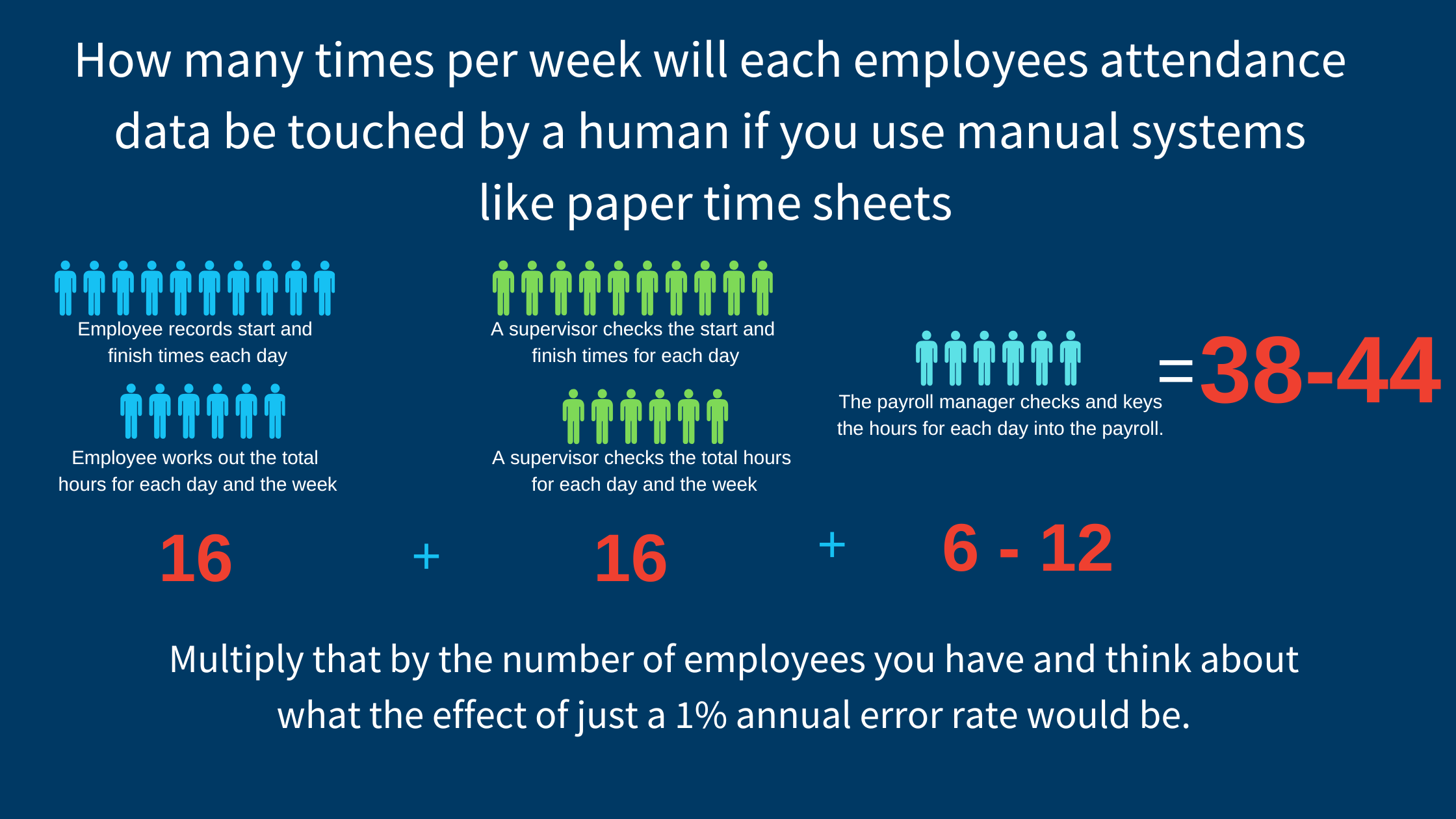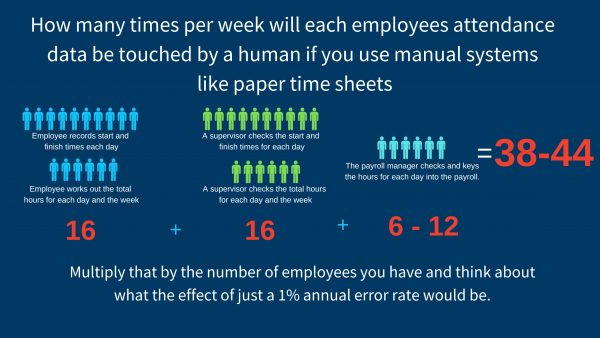
When it comes to managing employee time and attendance, many businesses still use paper timesheets to record hours worked. This method may appear simple and cost-effective, but it conceals hidden risks that can drain your resources more than you might expect.
One major issue? The frequency of data "touches"—the number of times data is recorded, transferred, or handled—throughout the payroll process. The more a piece of data is touched, the higher the chances of errors and overpayments.
Let’s delve deeper and uncover how paper timesheets might be costing your business more than you think!
Consider a typical employee working five days a week, recording only their clock-in and clock-out times each day. At first glance, it seems straightforward—just two entries per day. However, let’s follow the journey of that data through the payroll process and see how it quickly escalates:

That’s 38 to 44 separate touches for just one employee’s weekly time data.
Imagine multiplying that by the number of employees in your business—or if employees are tracking time on multiple jobs or projects daily!
Every time data is handled manually, the opportunity for mistakes increases. Here are some common issues that arise when time data is touched too often:
Human Error
Overpayments
Time Theft
Inefficiency
Even minor errors can accumulate significantly over time. For example:
Now, scale this across 20 employees: that’s a staggering $32,500 in potential overpayments annually!
This figure doesn’t even account for the time spent correcting errors or managing disputes about pay.
The good news is that businesses can move beyond outdated paper timesheets. Modern time and attendance systems can automate much of this process, dramatically reducing the number of touches and enhancing accuracy.
In managing employee time and attendance, every single touchpoint represents a potential risk for errors—and those errors can be costly. While paper timesheets may seem like a straightforward solution, their inefficiencies become painfully evident when examining the frequency of data handling throughout the payroll process.
By switching to an automated time tracking system, businesses can reduce the number of touches from 38 per week down to just a few clicks—saving time, money, and headaches along the way.
It’s time to leave paper behind and embrace smarter solutions that ensure accuracy while streamlining operations. After all, your employees’ time is valuable—and so is yours!